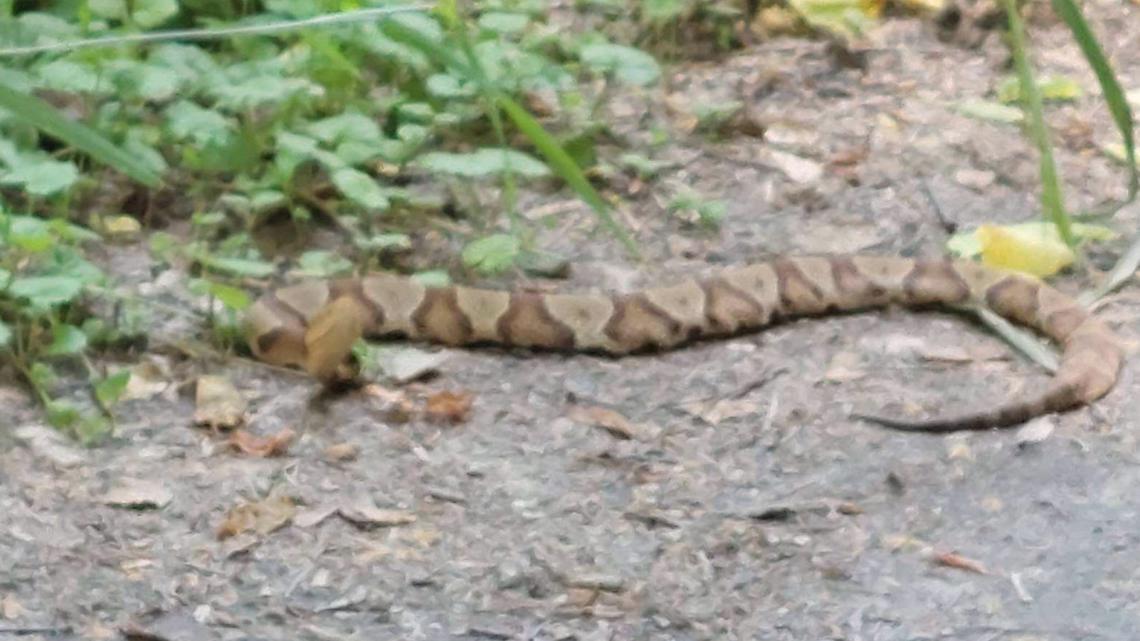BETHESDA, Md. — Dog owners and hikers beware: venomous copperhead snakes are being reported along the C&O Canal Towpath and other wild areas around the region in recent days, according to several social media posts.
A labrador retriever named Sayner was bitten near Riley's Lock Saturday, according to owner Inga Broerman and her son Augie Spendley. Broerman said it was her pet's second encounter with a snake this season.
The first bite occurred at Cabin John Park two weeks ago. The bite left fang marks, but no venom was transferred and Sayner had no ill effects.
A much more serious situation unfolded Saturday.
The mother and son said they had walked about a mile from the parking area at Riley's Lock with Sayner leading the way about 5 to 10 feet ahead on the edge of the gravel trail. The dog leaped backward after being struck by a 2-3-foot-long snake that was partially hidden in weeds along the edge of the trail.
"We were unbelievably scared," Augie Spendley said.
Spendley snapped a quick photo of one snake, but saw two other snakes just feet away.


The family said their 80-pound dog appeared to be in serious pain and had to be carried back to the car on Augie's shoulders "fireman" style.
"He was crying pretty hard in the car," Broerman said.
The family quickly learned that finding antivenom for copperhead strikes is not easy. A call to their regular veterinarian led them to the Bennett Creek Animal Hospital in Clarksburg, where a team including Dr. Kelly Hinkle DVM went to work.
Hinkle explained that antivenom is not stocked by most veterinarians because cases are not routine. A series of phone calls identified a dose of available antivenom at a Frederick animal hospital.
Broerman drove to Frederick to get the medicine while Sayner stayed in the care of the hospital in Clarksburg.
Hinkle said snakebites are "extremely painful" and that if left untreated it can lead to blood clotting, heart failure or amputation.
Broerman said she regularly hikes with Sayner and has enjoyed the entire length of the C&O Canal along with sections of the Appalachian Trail. They have never encountered snakes before. But she now plans to give her dog specialized snake "aversion" training and is considering the purchase of snake-proof booties before hitting any trail again with Sayner.


According to wildlife biologists, Copperheads are common in woodlands and rocky areas of the region. The snakes are frequently nocturnal during the hottest periods of the summer, which can make sightings rare despite their relative abundance in the area.
However, as the weather warms quickly in the spring and cools in the fall, Copperheads are more likely to be seen out warming themselves in the sun. They are also known to nest in small groups.
Copperhead mating season lasts from February to May and from late August to October, and can include showdowns between males when two or more meet in the presence of a receptive female. A female may also fight prospective partners, and will always reject males who back down from a fight with her.
Copperheads are among the most likely venomous snakes to bite. Although their venom is considered relatively mild, and their bites are rarely fatal for humans, they can be potentially extremely painful for humans and animals alike.

